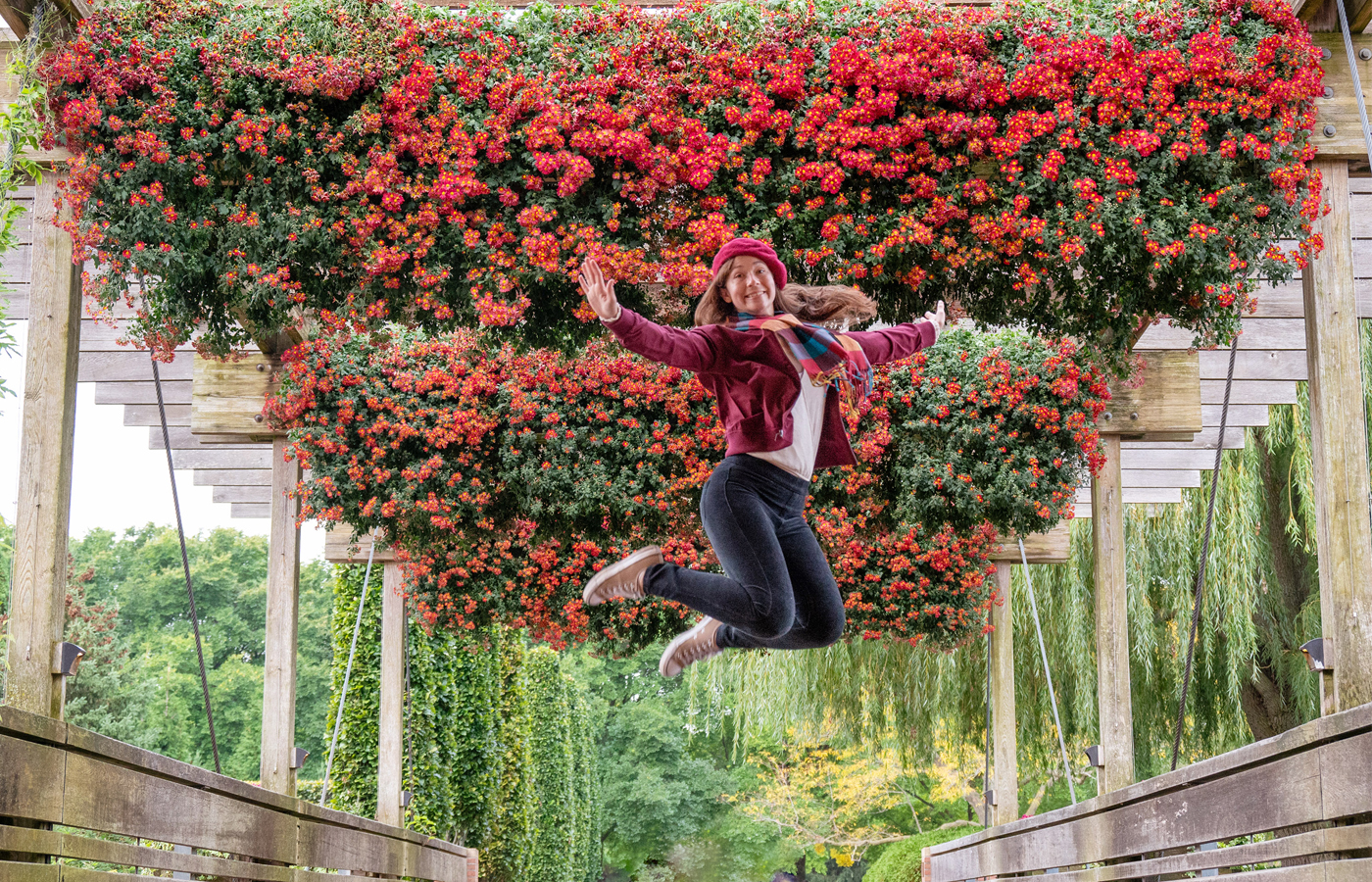
Alex Schneider, Visitor Events & Programs coordinator, celebrates fall under one of our signature seasonal displays—the cascading mums on the Visitor Center Bridge.
How do you make a joyful, feels-like-fall entrance at the Chicago Botanic Garden? Just walk over the Visitor Center Bridge, beneath the sky full of mums.
After a three-year absence, the Garden’s signature cascading chrysanthemums have rotated back on display, said Tim Pollak, the Garden’s assistant manager of plant production and outdoor floriculturist. Seven months in the making, the mum-loaded “hayracks” form a kind of grand entryway to the rich hues of early fall. “Visitors love them, and they have become our fall trademark each year,” he said.
Pro tip: Get to the Garden early and take a selfie under the hayracks on the bridge leading toward the Crescent Garden.
The iron-frame hayracks are filled with hundreds of cascading Japanese mums called ‘Firefall’, in hues of red with gold centers—daisy-like in appearance. Japanese mums, known as kiku, are a symbol of longevity and rejuvenation in Japan.
All told, we grew 6,965 mums for this year’s fall display; the bridge display is the most labor intensive.

Mums in waiting, grown for fall displays

Mums in autumn hues
In February, our horticulture teams begin taking cuttings for the hayracks from our stock of plants. Then they spend about 16 to 20 hours per week, training the stems to grow down instead of up. How? By attaching more than 3,000 hexagon nuts, or small weights, to the ends of stems.

Floriculturist Tim Pollak with mums in the production greenhouse.

We attach hex nuts to train the stems to grow down.
Our teams spent the summer pinching and trimming the mums to maintain their shape, while feeding, watering, and monitoring them to make sure the plants are in good health. To encourage the mums to bloom early, in time for the fall display, they controlled the summer light. That means the teams lowered a black curtain in the production greenhouses daily from 4 p.m. to 6 a.m. to create “short days,” or 14 hours of darkness.
“It’s a lot of hard work,” said Pollak, “but well worth it to see the faces of visitors when they cross that bridge.”

